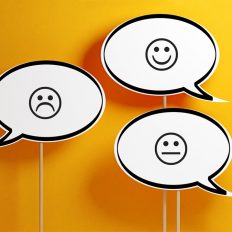Experiential measurement was a hot topic at Event Marketer’s Experiential Marketing Summit in May. The knee-jerk question asked after most case study presentations was, “How did you measure the experience?”
While many try and cast traditional performance indicators on the event and activation space, the results often feel limited in the story they tell of an experience’s value and impact, which makes this measurement still feel in its infancy.
At Cramer, we believe that the most successful brands connect with their customers and employees on an emotional level. The best emotional connections in events and activations can motivate, engage, and convert.
Do emotional connections provide the greatest insight on the return of an experience?
We caught up with Patricia Houston, founder and COO of MMR LIVE after her presentation made the case for a big conversation shift around experiential measurement.
You indicate that evaluating an experiential strategy using key emotional indicators (KEIs) can create a two-way conversation between brand and customer. What does this conversation look like and yield?
The emotional connections that brands make — both positive and negative— tell you if the overall messaging resonates as intended. Brand perceptions are driven by what the marketplace thinks and feels and not by what brands declare they are.
KEIs augment KPIs. Brand experiences aren’t measured in star ratings; they are measured in feelings. Typically, the negative responses are the most telling. Emotional measurement is about reducing friction and meeting needs.
I learn more from a frustrated consumer than I do a delighted one. The unhappy person tells me what I need to fix; the happy one tells me my system is working.
Emotional responses show you how to customize a communication stream for a given customer; it gives you the context needed to respond in a way that builds trust.
The activation level is like the Super Bowl of the brand experience, and professionals in this space understand that every detail communicates something. They are used to choreographing multiple moving parts and stakeholders. But stepping back and looking for friction points while the activation is in progress can be challenging.




